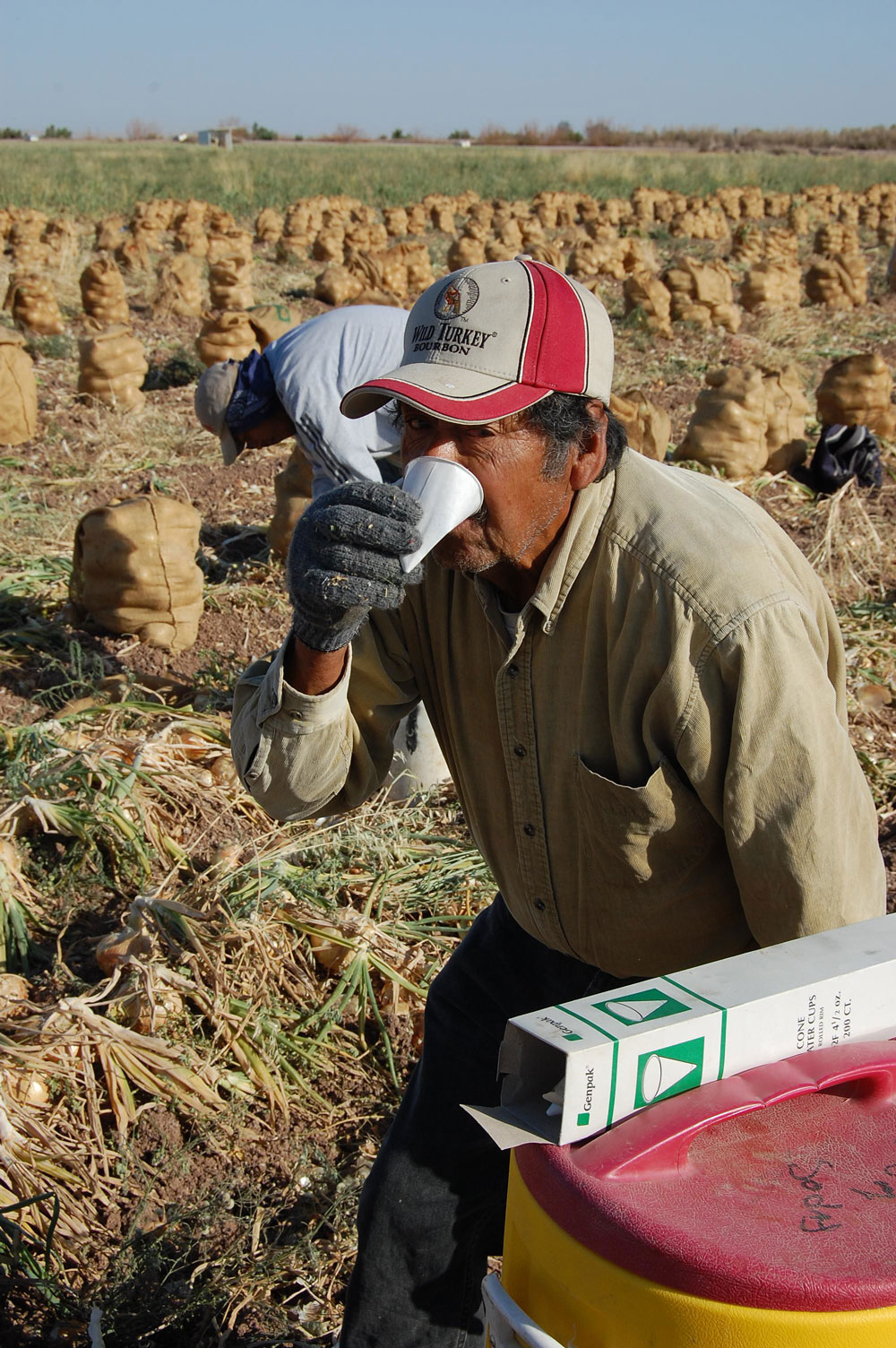Farm groups and ag labor advocates are keeping a close eye on pending rulemaking that would add federal regulations to the conversation surrounding the health of workers in hot conditions across the country.
Unusual heat in Washington and Oregon last year generated increased attention to outdoor workers’ safety. Washington enacted an emergency heat rule for farmworkers, California has its own heat illness prevention law and other states, including Oregon, have been considering similar policies.
Now the federal Occupational and Safety and Health Administration (OSHA) is examining more than a thousand public comments it received on its advance notice of proposed rulemaking, which sought feedback on what a heat standard should look like.
The Heat Injury Illness and Prevention in Outdoor and Indoor Work Settings ANPRM is not specific to agriculture, but many of the comments came from ag employers and farmworker advocacy groups. OSHA says if it decides to move forward, a forthcoming proposed rule will “more clearly set forth employer obligations and the measures necessary to more effectively protect employees from hazardous heat.” Water breaks help prevent heat-related illness. (Photo: Department of Labor)
Water breaks help prevent heat-related illness. (Photo: Department of Labor)
For some employers, that sounds like more expenses to do what they’re already doing to keep workers safe. To some advocates, it’s a recognition that essential workers often stay in fields despite high temperatures, regardless of work rules, because they want to maximize their earnings.
The rate of death from workplace heat-related injuries in agriculture is 35 times the average of all job categories, the rule says. In a written comment, Monica Ramirez, founder and president of Justice for Migrant Women, noted this is likely to get worse as climate change brings more days of extreme heat. “The rule should be designed to ensure it covers agricultural workers employed by farm labor contractors and small and large farms alike,” she wrote.
Workers paid piecemeal for the products they pick or harvest need to know they will be paid for any mandated rests or water breaks, wrote Julie Taylor, executive director of the National Farm Worker Ministry. In an interview with Agri-Pulse, Taylor said sometimes workers choose to not drink water to limit the need for bathroom breaks “and it just increases the propensity towards having real difficulties” from extreme heat.
She’d like any regulation to consider a payment scheme for rest times so the most productive workers don’t see breaks as hurting them financially. Taylor said a farmworker disaster relief fund to help when work is disrupted because of extreme weather conditions could also be part of a new rule.
Certified crop advisers tapped Rachel Owen, senior policy manager for the American Society of Agronomy, the Crop Science Society of America and the Soil Science Society of America, to draft a comment on their behalf.
“We didn't write these comments in opposition to a heat standard [nor] in support of one,” Owen told Agri-Pulse. “It was more so just wanting to make sure that the crop advisers and the work that they do was considered.”
Looking for the best, most comprehensive and balanced news source in agriculture? Our Agri-Pulse editors don't miss a beat! Sign up for a free month-long subscription.
For example, she said crop scouting can be very time-sensitive. Regional weather differences mean a national standard could prove challenging in different ways in various places. What temperature constitutes “too hot” may vary with humidity, for example. A crop adviser can meet early or late in the day, or cool off in an air-conditioned truck between farm visits, to avoid extreme heat.
Owen recognized that other workers might not have those options, but a rule written with them in mind might cause undue loss of work time for crop advisers. Her comment, filed under the name of Luther Smith, interim CEO of the International Certified Crop Advisor Program, says current OSHA standards are adequate and that additional “regulations could be financially burdensome and cause a loss in productivity during times of critical need for their clients and customers.” If a new regulation is written, the comment says, “[p]revention measures should be focused on education, training and worker engagement, rather than interventions at high temperatures.”
 Michael Marsh, NCAE
Michael Marsh, NCAE
More than two dozen members of the House, led by Judy Chu, D-Calif., urged OSHA to take regulatory action. “Workers are in grave danger from extreme heat, and their lives are at risk unless OSHA acts with an effective standard,” they wrote.
But Michael Marsh of the National Council of Agricultural Employers wrote that existing Injury and Illness Prevention Programs include heat protocols that are “reviewed, refreshed, and successfully implemented every season considering the challenges presented in the workplace from a changing climate.” NCAE members account for nearly 80% of all U.S. farm and ranch employers, he wrote, all of whom are committed to their workers’ health and safety. “Consequently, the National Council of Agricultural Employers finds there is no need for additional regulation.”
The comment period is closed and, as another summer growing season looms, OSHA has the next move.
For more news, go to www.Agri-Pulse.com.

